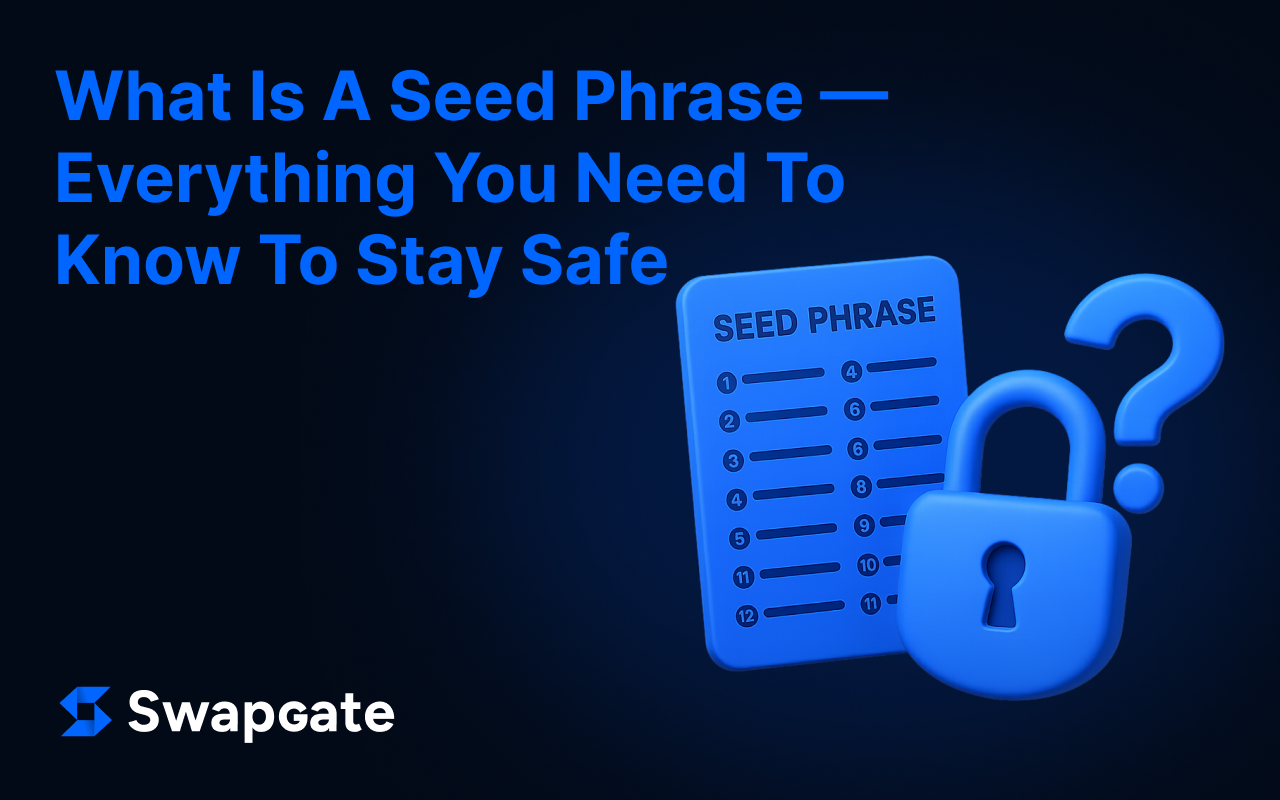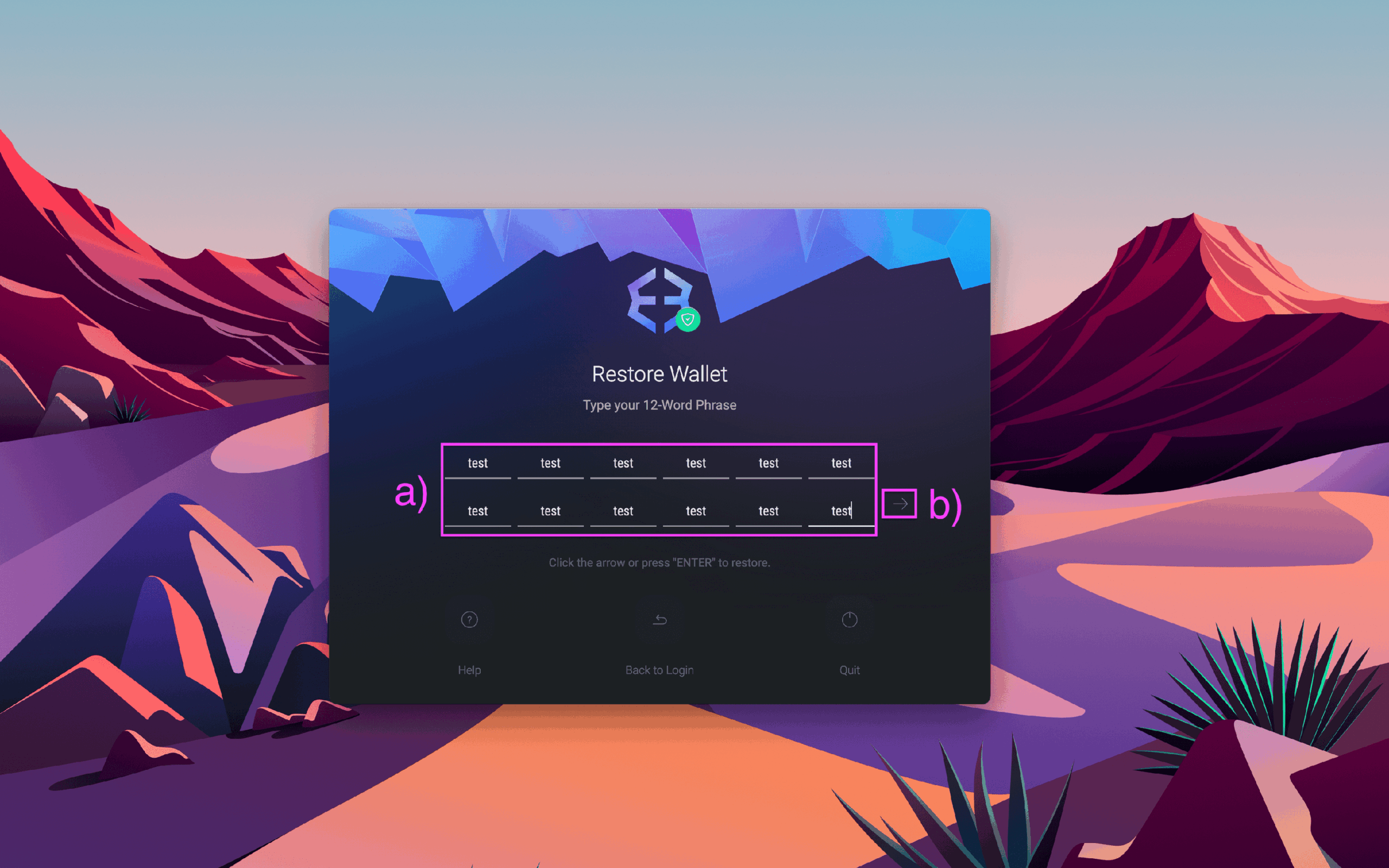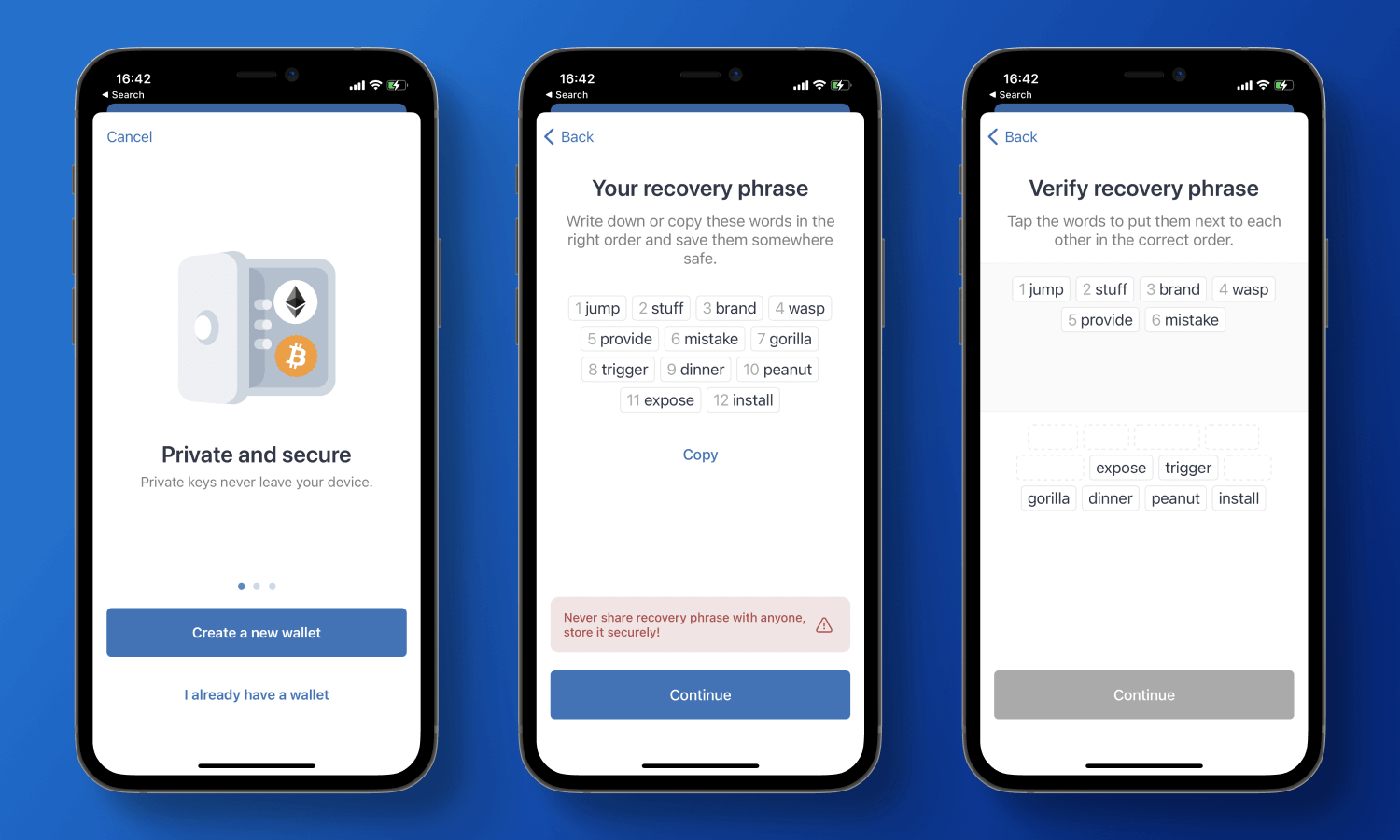
A seed phrase—also called a recovery phrase, mnemonic, or Secret Recovery Phrase—is the master key to your crypto. It’s a list of 12–24 words that can recreate every private key and address in a compatible wallet. Most modern wallets use the open standard BIP-39 for their secret phrases; those words are turned into a cryptographic seed, which then derives all your keys using an HD (hierarchical deterministic) process (BIP-32). In practice, that means one backup secures all accounts created by that wallet.
What a Seed Phrase Actually Is

Source: Exodus
- Standardized words, not random phrases. With BIP-39, your wallet picks enough entropy, maps it to a word list of 2048 English words, and adds a checksum. That becomes your 12/18/24-word crypto seed phrase. Order matters. Lose a word or scramble the order, and you can’t restore your funds.
- One backup for many keys. HD wallets (BIP-32) derive an entire tree of private/public keys from the seed, so your seed phrase wallet backup restores every account and token that wallet generated.
- Wallet-agnostic design. Because BIP-39/BIP-32 are published standards, many wallets can import the same Bitcoin seed phrase or multi-chain seed, so long as you know the right derivation path. (Some wallets add custom paths; always check docs.)
Remember: seed phrase = recovery phrase = Secret Recovery Phrase (SRP). Private key ≠ seed phrase. A private key controls one address; the seed phrase can generate all of them.
How It Works
- Your wallet generates strong randomness and converts it to words (BIP-39).
- Those words + an optional passphrase (sometimes called the “25th word”) are stretched into a seed.
- The seed feeds an HD wallet (BIP-32) that derives your keys and addresses.
Security takeaway: a properly created 12 or 24-word phrase has astronomical entropy—brute-forcing it is not realistic with current computing. The real risk is social engineering, phishing, device compromise, or you losing the backup.
How to Find, Copy And Save Your Secret Recovery Phrase

Source: Binance
In this section we’ll explain where to find your recovery phrase using a popular wallet MetaMask as an example. MetaMask calls your seed phrase a Secret Recovery Phrase (SRP) and encrypts it locally with your password. You can reveal it inside the app, but MetaMask emphasizes never to share it with anyone (MetaMask support will never ask).
MetaMask Extension (desktop)
- Open MetaMask → click your account icon → Settings → Security & Privacy.
- Click Reveal Secret Recovery Phrase.
- Complete the brief safety quiz, enter your password, then press Hold to reveal SRP.
- Carefully copy the words in order. Store them offline (see best practices below).
MetaMask Mobile (iOS/Android)
- Tap Settings (lower-right) → Security & Privacy.
- Tap Reveal Secret Recovery Phrase and select the SRP (if multiple).
- Answer the two safety questions, enter your password, then Hold to reveal SRP.
- Copy the words exactly and store them securely offline.
How to Back Up Like a Pro
1) Keep it offline.
Write the phrase on paper—or better, stamp it into metal to resist fire/water. Don’t screenshot, don’t email it, and don’t store it in cloud notes. This dramatically reduces your exposure to malware and account breaches.
2) Make 2–3 geographically separated copies.
One copy is a single point of failure. Multiple copies, stored in separate secure locations (e.g., safe + safety deposit), protect against theft, fire, and forgetfulness. (If you do this, guard against both theft and loss.)
3) Consider an optional BIP-39 passphrase (advanced).
This extra “word” (really a secret string) changes the seed entirely. Without it, you won’t restore your real wallet. It’s powerful—but dangerous if you forget it. Use only if you can back it up with the same rigor.
4) Understand Shamir backup (very advanced).
Standards like SLIP-39 split a secret into M-of-N shares (e.g., any 2 of 3), reducing single-copy risk. Some hardware wallets (e.g., Trezor Model T) support it. Great for high stakes; overkill for casual users.
5) Test your backup.
Before depositing serious funds, try restoring to a spare device (offline) to ensure your wallet backup actually works.
6) Separate daily-spend from vaults.
Keep trading funds in a “hotter” setup; keep long-term holdings under stricter controls (hardware wallet, passphrase/Shamir, or multisig). Remember: you can always exchange BTC to USDT on Swapgate to continue trading.
Common Mistakes
- Typing your seed into random websites/tools. Never paste your crypto seed phrase into any web page (including generators). If you must verify a phrase, do so offline on a trusted device—better yet, don’t do it at all. Read more about fake crypto airdrop scams.
- Screenshots and cloud notes. Convenience today = compromise tomorrow. Cloud accounts get phished; phones get malware. Keep the metamask secret recovery phrase offline.
- Confusing passwords with the SRP. Your wallet password unlocks the app on that device. The seed phrase restores your wallet on any device. Don’t treat them the same.
- Assuming 12 words are “weak.” Properly generated 12-word BIP-39 phrases still have massive entropy. The issue isn’t length; it’s secrecy and randomness at creation time. (Hardware vendor explainers cover this clearly.)
FAQ
- Is my seed phrase the same as a private key?
No. Your recovery phrase is the master that deterministically derives many private keys (HD wallet). A single private key controls one address. Protect both; leak either and funds can be stolen. - Can I restore a Bitcoin wallet from my seed in another app?
Often yes—if both follow BIP-39/BIP-32 and you use the correct derivation path. Standards exist to enable portability, but different wallets sometimes choose different paths. Check your target wallet’s import guide. - What if I lose the phrase?
No company can reset it for you. Self-custody means you are the custodian. Without your seed (and any BIP-39 passphrase you added), funds are unrecoverable. That’s why backups matter. - Are there safer backups than paper?
Metal seed plates resist fire and water; SLIP-39 can split a secret into shares so a thief or a fire doesn’t compromise everything at once. Advanced, but powerful when done right.
Final Words
Think of your security phrase meaning like the deed to a house: the paper itself isn’t the house, but whoever holds it can claim the property. In crypto, possession of the phrase is control of the money. So:
- Keep it offline (paper/metal).
- Keep it redundant (two or three secure places).
- Keep it secret (never type it into a site or DM; no screenshots).
- Consider defense-in-depth (hardware wallet, optional BIP-39 passphrase, or Shamir shares for large holdings).
Protect your crypto seed phrase, and you protect everything it unlocks. Get sloppy with the backup, and even the strongest cryptography can’t save you. Standards like BIP-39 and BIP-32 make self-custody portable and robust—but your process is what keeps it safe for the long haul.